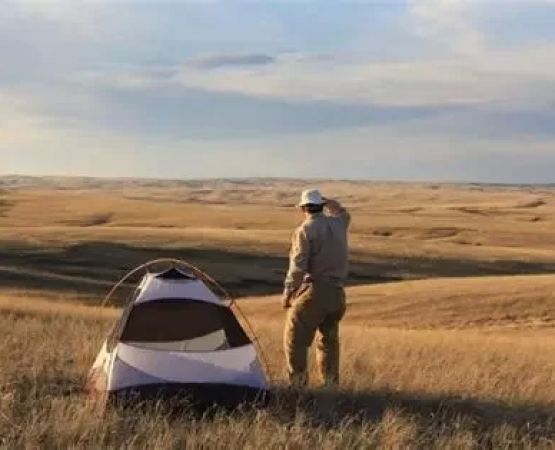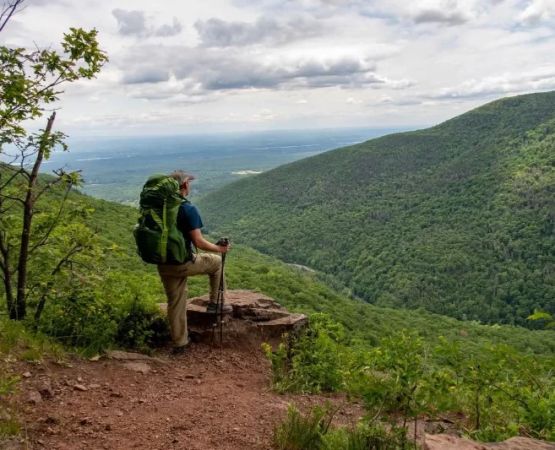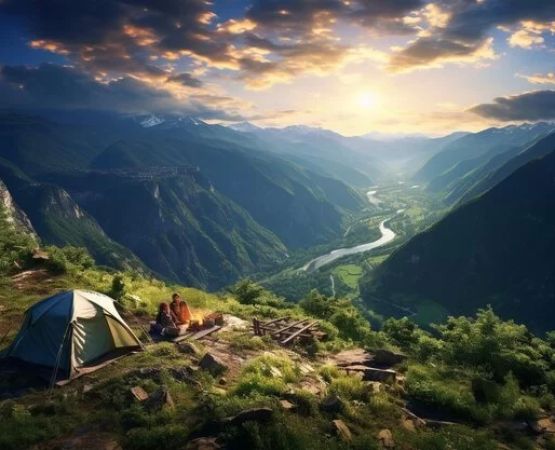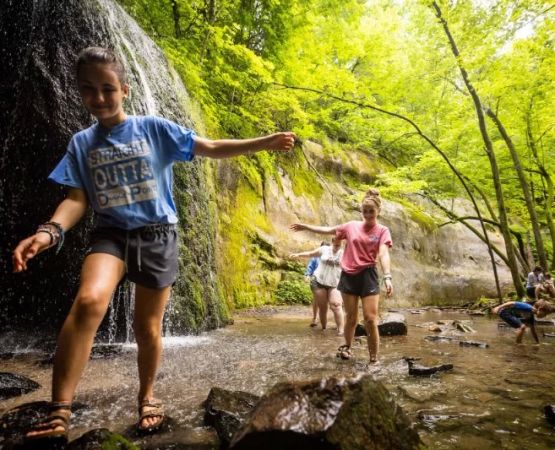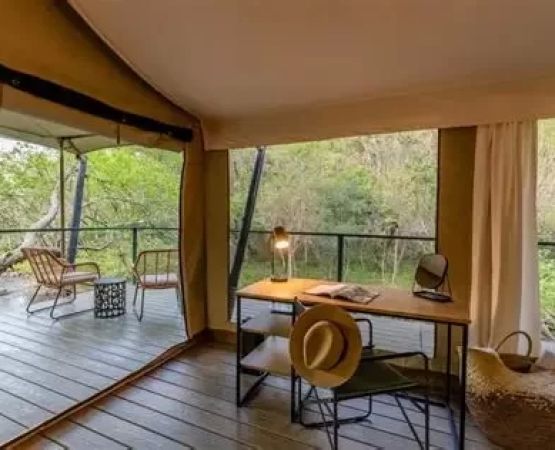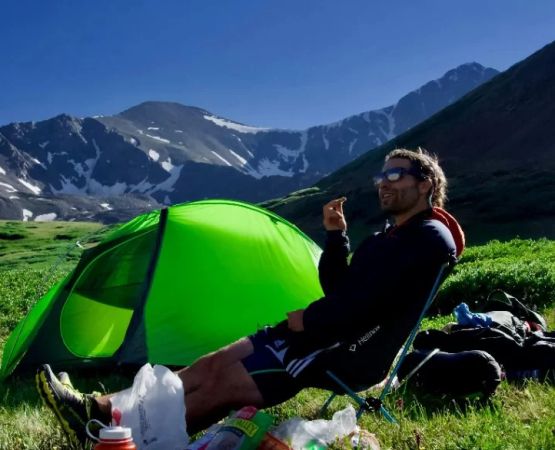- 1-Balancing-Work-and-Nature
- 2-Setting-Up-a-Reliable-Outdoor-Workspace
- 3-Choosing-the-Right-Location-for-Digital-Nomads
- 4-Essentials-for-Camping-and-Working-Remotely
- 5-Stories-from-Digital-Nomads-Who-Made-It-Work
- 6-How-Pine-Cliff-Resort-Supports-Digital-Nomad-Campers
1. Balancing Work and Nature
For many professionals today, the idea of blending work with outdoor adventure is more than just a dream — it’s a lifestyle. Understanding how to enjoy camping as a digital nomad means learning to balance productivity with peace, and technology with tranquility. It’s about creating a life that allows you to answer emails in the morning and hike through pine forests in the afternoon.
Digital nomad camping offers a rare opportunity to escape the noise of the city while staying connected to your career. This lifestyle emphasizes mindfulness, creativity, and flexibility — traits that thrive when you work close to nature. Many remote workers have found that fresh air and natural surroundings improve concentration, reduce burnout, and lead to better problem-solving.
2. Setting Up a Reliable Outdoor Workspace
2.1 Power and Connectivity
The biggest challenge for digital nomads camping outdoors is staying connected. Reliable Wi-Fi and power sources are non-negotiable. Portable solar panels, mobile hotspots, and power banks are must-haves for maintaining workflow off the grid. Some modern campgrounds, like those near Pine Cliff Resort, even offer designated “remote work zones” with access to charging stations and high-speed internet.
2.2 Comfort and Ergonomics
Working outdoors can be magical, but it requires preparation. A foldable laptop stand, ergonomic chair, and sunshade tent can turn any campsite into a comfortable outdoor office. Remember, posture matters as much at a campsite as it does in a corporate office. Investing in quality gear ensures long hours of focused, pain-free work.
2.3 Time Management and Work Boundaries
It’s easy to lose track of time when you’re surrounded by nature. Establishing clear work hours and using productivity apps can help keep you on track. For instance, setting a “no work after sunset” rule encourages rest and connection with nature, while maintaining healthy boundaries between your personal and professional life.
3. Choosing the Right Location for Digital Nomads
3.1 Accessibility and Environment
When selecting a camping spot, accessibility to resources and internet connectivity are top priorities. Coastal campgrounds and forest retreats often provide breathtaking backdrops and reliable access to essential services. Locations like Pine Cliff Resort offer the perfect balance — peaceful surroundings, strong connectivity, and proximity to local attractions for weekend adventures.
3.2 Climate and Comfort
Comfort is key when living and working outdoors. A moderate climate allows you to stay focused without battling extreme heat or cold. Many digital nomads prefer destinations in California, Oregon, and Colorado — where the scenery is stunning, and the weather allows year-round camping.
4. Essentials for Camping and Working Remotely
4.1 Tech Tools You Can’t Do Without
While a laptop and Wi-Fi are obvious, digital nomads often rely on noise-canceling headphones, backup drives, and VPNs for security. A small LED light and weather-resistant extension cords can also make late-night work sessions more manageable. The key is efficiency — pack light, but smart.
4.2 Food, Health, and Daily Routine
One of the joys of camping is simplicity. Cooking meals over a portable stove, stretching during breaks, and staying hydrated are all essential habits. Good oral hygiene and regular rest are also vital, as outdoor conditions can quickly wear you down. Many remote workers recommend prepping meals ahead and keeping nutritious snacks nearby to maintain energy throughout the day.
4.3 Staying Motivated in Nature
While the sound of waves or rustling leaves can be soothing, they can also be distracting. Building routines — such as morning walks before logging on or evening reflections by the campfire — helps maintain discipline. Remember: the goal isn’t just to work remotely, but to thrive remotely.
5. Stories from Digital Nomads Who Made It Work
Take Emily, a freelance designer from Austin, who decided to live and work on the road for six months. She converted her van into a mobile office, complete with solar panels and a coffee setup. “I found that my creativity doubled when I was camping near lakes or mountains,” she said. “The quiet helped me focus better than any coworking space.”
Another story comes from Mike, a software engineer who spends part of the year at Pine Cliff Resort. “The Wi-Fi is strong enough for Zoom meetings, and the mornings are perfect for hiking before work,” he explained. His experience shows that with the right setup, digital nomads can truly integrate productivity with exploration.
6. How Pine Cliff Resort Supports Digital Nomad Campers
Pine Cliff Resort has become a haven for those who want to experience the best of both worlds — professional efficiency and natural serenity. The resort offers modern amenities such as high-speed internet, quiet camping zones, and coworking-friendly cabins. There are also guided outdoor activities that encourage guests to unplug after work and reconnect with nature.
Whether you’re drafting a business proposal beside a forest stream or coding under the stars, Pine Cliff Resort ensures that comfort and inspiration coexist. Its supportive community of remote workers, creators, and travelers makes it one of the most desirable destinations for digital nomads in the U.S.
Learning how to enjoy camping as a digital nomad is more than mastering logistics — it’s about embracing a mindset. It’s the freedom to work where you feel most alive, surrounded by nature’s rhythm instead of city noise. And for those ready to live that balance, places like Pine Cliff Resort are where it all begins.

